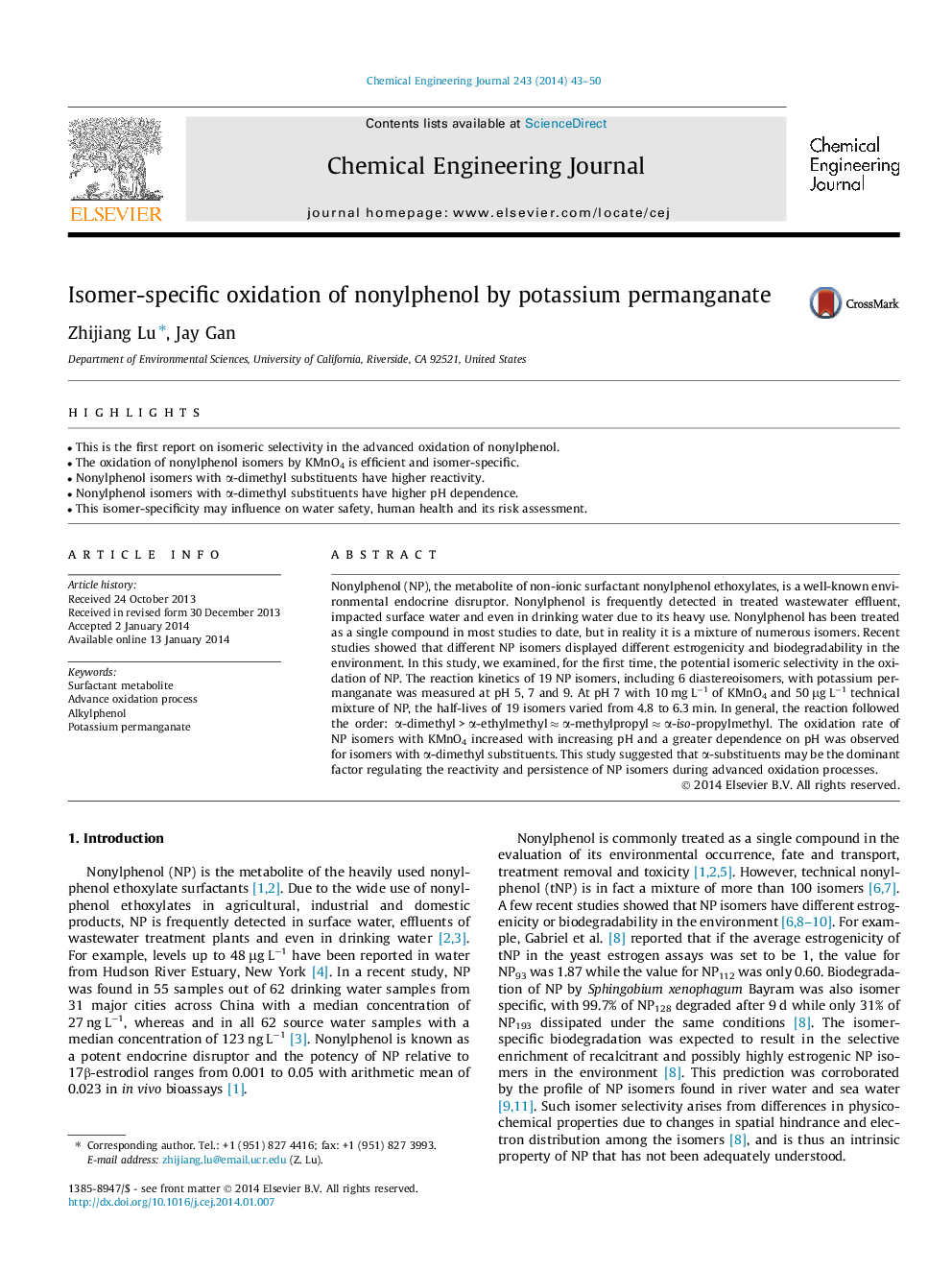| Article ID | Journal | Published Year | Pages | File Type |
|---|---|---|---|---|
| 147861 | Chemical Engineering Journal | 2014 | 8 Pages |
•This is the first report on isomeric selectivity in the advanced oxidation of nonylphenol.•The oxidation of nonylphenol isomers by KMnO4 is efficient and isomer-specific.•Nonylphenol isomers with α-dimethyl substituents have higher reactivity.•Nonylphenol isomers with α-dimethyl substituents have higher pH dependence.•This isomer-specificity may influence on water safety, human health and its risk assessment.
Nonylphenol (NP), the metabolite of non-ionic surfactant nonylphenol ethoxylates, is a well-known environmental endocrine disruptor. Nonylphenol is frequently detected in treated wastewater effluent, impacted surface water and even in drinking water due to its heavy use. Nonylphenol has been treated as a single compound in most studies to date, but in reality it is a mixture of numerous isomers. Recent studies showed that different NP isomers displayed different estrogenicity and biodegradability in the environment. In this study, we examined, for the first time, the potential isomeric selectivity in the oxidation of NP. The reaction kinetics of 19 NP isomers, including 6 diastereoisomers, with potassium permanganate was measured at pH 5, 7 and 9. At pH 7 with 10 mg L−1 of KMnO4 and 50 μg L−1 technical mixture of NP, the half-lives of 19 isomers varied from 4.8 to 6.3 min. In general, the reaction followed the order: α-dimethyl > α-ethylmethyl ≈ α-methylpropyl ≈ α-iso-propylmethyl. The oxidation rate of NP isomers with KMnO4 increased with increasing pH and a greater dependence on pH was observed for isomers with α-dimethyl substituents. This study suggested that α-substituents may be the dominant factor regulating the reactivity and persistence of NP isomers during advanced oxidation processes.
